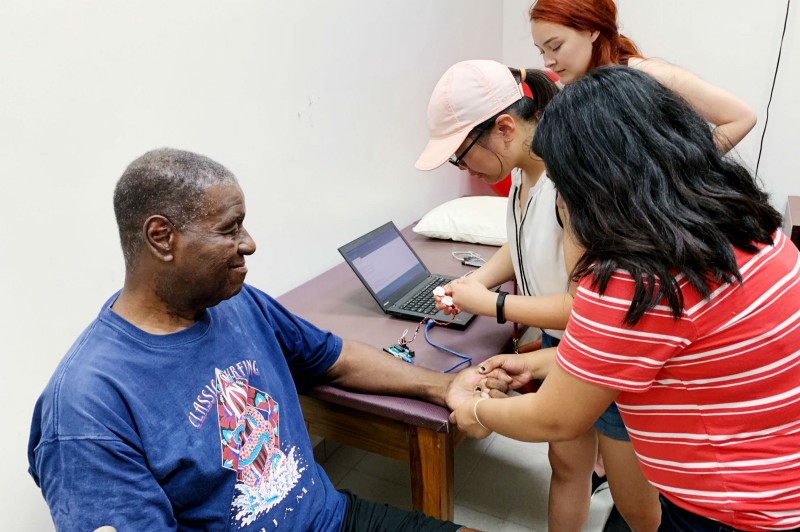Students Engineer Rehabilitation Robots in Jamaica

This spring, a group of 16 students from a wide range of disciplines took a Penn Global Seminar course entitled “Robotics and Rehabilitation” and found themselves building robots to assist patients with specific rehabilitation needs in Jamaica.
The course was designed and led by CJ Taylor, Professor of Computer and Information Science, and Michelle Johnson, Assistant Professor of Physical Medicine and Rehabilitation in the Perelman School of Medicine. The decision to base the course around patients in Jamaica was due in part to Johnson’s long-term connections with rehabilitation centers there.
Taylor and Johnson, both part of the GRASP Lab, wanted the students to address challenges faced by individuals and, during the class’s trip to Jamaica, to fine-tune their robots based on feedback from the patients. For instance, one group of students worked to build robotic gloves to assist their patient, who had limited functionality in one hand.
Throughout the course, Taylor and Johnson taught their students the engineering and medical skills required to take on the challenge of designing such rehabilitative robots:
Not all course participants had engineering backgrounds, and that was intentional. The students’ majors ranged from chemical and biomolecular engineering to health and societies. Taylor and Johnson wanted the experience open to anyone, so they accepted students from across Penn and trained them in what they needed to know, alternating subjects. One week, for instance, Taylor would teach robotic engineering skills, and then the next Johnson would teach medical engineering skills.
“We structured the course to focus on this introduction to robotics,” Taylor says. “We covered topics like 3D fabrication and mechanical design. We did a little bit of electronics and circuitry and electric engineering, plus a little bit of programming, signal processing. It was a series of topics designed to get students to the point where they could design autonomous systems.
Continue reading at Penn Today.
